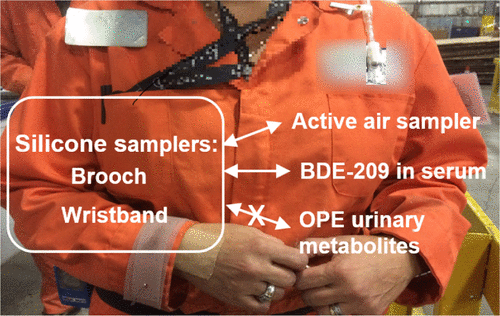Can Silicone Passive Samplers be Used for Measuring Exposure of e-Waste Workers to Flame Retardants?
Silicone passive samplers were assessed for measuring personal exposure to 37 flame retardants at three Québec e-waste recycling facilities. Silicone brooches (n = 45), wristbands (n = 28), and armbands (n = 9) worn during a ∼8 h work shift accumulated detectable amounts of 95–100% of the target compounds. Brooch concentrations were significantly correlated with those from active air samplers from which we conclude that the brooches could be used to approximate inhalation exposure and other exposures related to air concentrations such as dermal exposure. The generic sampling rate of the brooch (19 ± 11 m3 day–1 dm–2) was 13 and 22 times greater than estimated for home and office environments, respectively, likely because of the dusty work environment and greater movement of e-waste workers. BDE-209 concentrations in brooches and wristbands were moderately and significantly (p < 0.05) correlated with levels in blood plasma; organophosphorus esters in brooches and wristbands were weakly and insignificantly correlated with their metabolite biomarkers in post-shift spot urine samples. Silicone brooches and wristbands deployed over a single shift in a dusty occupational setting can be useful for indicating the internal exposure to compounds with relatively long biological half-lives, but their use for compounds with relatively short half-lives is not clear and may require either a longer deployment time or an integrated biomarker measure.

